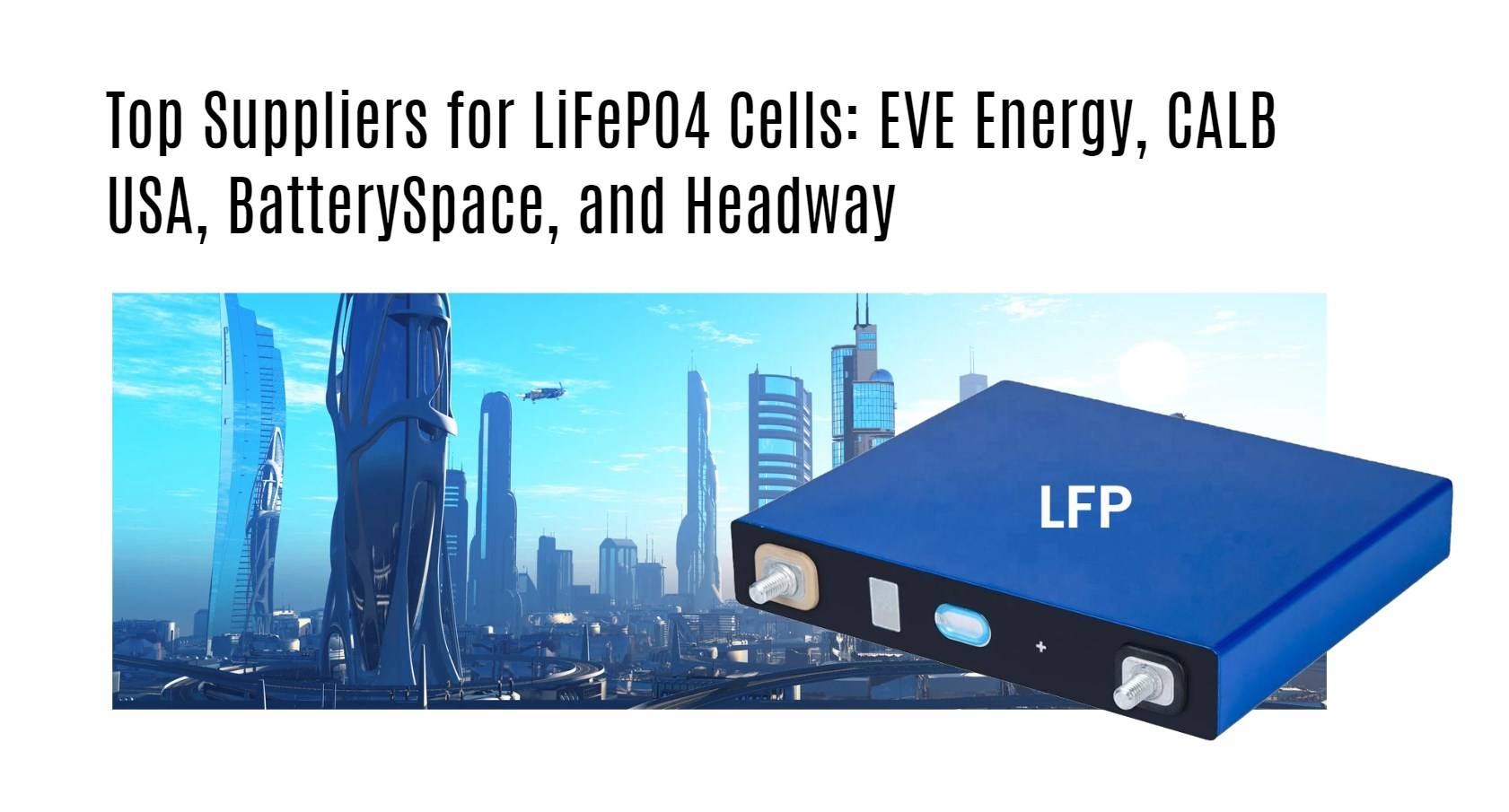The demand for lithium iron phosphate (LiFePO4) batteries is on the rise, with top suppliers like EVE Energy, CALB USA, and BatterySpace leading the market. These companies offer high-quality cells known for their performance, safety, and longevity. This article explores the key features and benefits of these suppliers’ offerings.
What Are the Key Features of EVE Energy’s LiFePO4 Cells?
EVE Energy is recognized for its high-performance LiFePO4 cells, such as the LF304 and LF280K models. These cells are designed with advanced technology, providing:
- High Capacity: The LF304 model offers a nominal capacity of 304Ah, while the LF280K provides 280Ah.
- Long Cycle Life: Both models boast a cycle life exceeding 6000 cycles, ensuring long-term reliability.
- Safety Features: EVE cells include built-in protections against overcharging and short circuits.
Chart: EVE Energy Cell Specifications
| Model | Capacity | Voltage | Cycle Life | Weight |
|---|---|---|---|---|
| LF304 | 304Ah | 3.2V | >6000 | 5,480g |
| LF280K | 280Ah | 3.2V | >6000 | 5,420g |
What Makes CALB USA a Leading Supplier of LiFePO4 Cells?
CALB USA is a prominent manufacturer known for its innovative battery solutions. Key features include:
- High Energy Density: CALB cells provide excellent energy storage capabilities, making them suitable for various applications.
- Robust Safety Measures: Their batteries are equipped with anti-explosion safety valves and ceramic membrane technology.
- Longevity: Many CALB models exceed 6000 cycles, ensuring durability.
Chart: CALB Cell Specifications
| Model | Capacity | Voltage | Cycle Life | Weight |
|---|---|---|---|---|
| 314Ah | 314Ah | 3.2V | >6000 | 5,560g |
| L135F72 | 72Ah | 3.2V | >2000 | 1,780g |
What Are the Benefits of Using BatterySpace LiFePO4 Cells?
BatterySpace offers a range of LiFePO4 cells that provide several advantages:
- Higher Power Output: Their cells deliver twice the power of traditional lead-acid batteries.
- Wide Temperature Range: Operable between -20°C and 60°C, making them versatile for different environments.
- Modular Design: Allows easy integration into various systems, enhancing flexibility.
Chart: BatterySpace Cell Specifications
| Model | Capacity | Voltage | Cycle Life | Weight |
|---|---|---|---|---|
| Custom Model | Custom | 3.2V | Varies | Varies |
How Do EVE Energy Cells Compare to Other Brands?
EVE Energy cells are often favored due to their exceptional cycle life and safety features. Compared to other brands like CALB and BatterySpace, EVE cells typically offer higher capacities at similar weights, making them ideal for energy-intensive applications.
How Do CALB Cells Ensure Longevity and Safety?
CALB employs advanced manufacturing processes and rigorous testing to ensure their batteries maintain performance over time. Their use of high-quality materials contributes to longer cycle life and enhanced safety features, such as built-in thermal management systems.
How Do BatterySpace Products Compare in Performance?
BatterySpace products are designed to meet or exceed industry standards for performance. They are known for their high discharge rates and reliability in demanding applications such as electric vehicles and renewable energy systems.
What Applications Are Best Suited for These LiFePO4 Batteries?
LiFePO4 batteries from these suppliers are ideal for various applications:
- Renewable Energy Storage: Effective in solar energy systems.
- Electric Vehicles: Suitable for powering electric cars and bikes.
- Backup Power Systems: Reliable for UPS systems and emergency power supplies.
Tips for Battery Wholesale Buyers
When considering wholesale purchases:
- Research Reputable Manufacturers: Choose suppliers known for quality products and reliable service.
- Evaluate Safety Standards: Ensure compliance with international safety regulations.
- Consider OEM Options: Collaborate with manufacturers like Redway Battery, recognized for their tailored solutions.
Established in 2012, Redway Battery specializes in lithium battery manufacturing with a focus on quality and innovation. They offer customized solutions suitable for various applications, including electric vehicles and energy storage systems.
Redway Battery Expert Insight
At Redway Battery, we strive to provide high-performance lithium batteries that cater to diverse customer needs. Our commitment to quality ensures that our products deliver exceptional reliability and longevity.”This insight reflects Redway’s dedication to providing reliable energy solutions while addressing environmental concerns through cutting-edge technology.
FAQ Section
- What are the main advantages of using LiFePO4 batteries?
LiFePO4 batteries offer longer cycle life, enhanced safety features, higher energy density, and lower environmental impact compared to traditional lead-acid batteries. - Which suppliers are leading in the LiFePO4 battery market?
Top suppliers include EVE Energy, CALB USA, and BatterySpace, each offering high-quality products tailored to various applications. - What applications can benefit from LiFePO4 batteries?
These batteries are ideal for renewable energy storage systems, electric vehicles, backup power supplies, and more.



